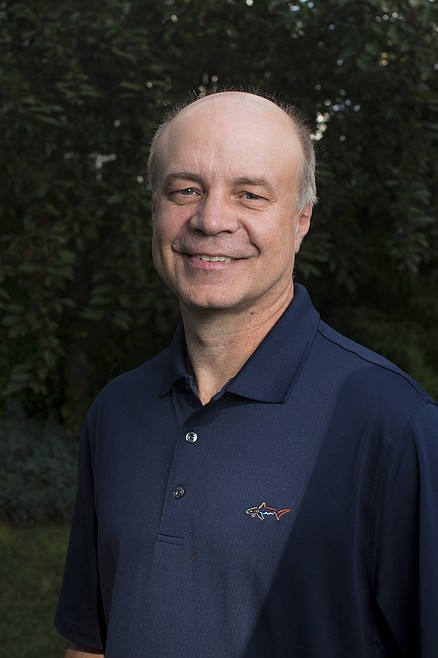Fire, tornadoes and record heat
The blast furnace was going strong last week across much of the Far West. Last Monday, Aug. 17, Cliff recorded a high of 100 degrees at his station in northwestern Coeur d’Alene. Spokane also hit 100 degrees on that date, but the airport also hit 100 degrees on Sunday, Aug. 16. Most stations across North Idaho were in the upper 90s last Monday.
Sunday, Aug. 16, was also a scorcher in California. The National Weather Service reported that Death Valley reached a blistering 130 degrees. This was 4 degrees from the all-time world record of 134 degrees, also recorded at Death Valley, set back on July 10, 1913. It was also the hottest temperature on Earth since 1931.
In the Central Valley of California, Sacramento hit 112 degrees on Aug. 16. For about a week, many locations in this region reported temperatures well over 100 degrees resulting in the failing of some air conditioners.
In addition to the heat, heavy smoke from area fires made air qualities rise into the “very unhealthful” to “hazardous” category. The California fires are also causing unhealthy air qualities as far north as southern Idaho and southern Montana.
Phoenix, Ariz., known for its intense summer heat, went 39 days in a row with high temperatures at or above 110 degrees. More 110-degree plus heat is expected this week. This region is also experiencing its hottest summer in recorded history.
The long-range computer models are showing some changes in the upper levels of the atmosphere by late in the month. The strong ridge of high pressure that’s been bringing the Far West this massive heat, is expected to weaken to allow some cooler air into the western U.S. However, it still looks dry as many locations, especially in California, are currently experiencing “extreme drought” conditions as this will likely be the driest and perhaps hottest summer in the history in parts of the Far West.
Here in North Idaho, it’s also been very dry. Since July 8, only 0.09 inches of moisture has fallen in Coeur d’Alene. Cliff tells me that this is the second-driest period in Coeur d’Alene. The last time it was this dry at this time of year was in 1913 when only a trace of rain was recorded in August.
Looking farther out, we don’t see much rainfall until at least the end of the month or early September. By then, there is a chance of showers and thunderstorms across the Inland Northwest. Hopefully, we don’t see any dry lightning, which, by the way, caused some of the major wildfires in California.
Thanks to a developing cooler La Nina sea-surface temperature pattern, the upcoming fall season does look wetter and cooler than normal here in North Idaho. September’s moisture totals should turn to above-normal levels. Despite a wetter-than-expected fall season, there will likely be a brief period of dry weather, probably in October.
It’s another tough year for residents in California as wildfires have broken out over much of the state. Over two dozen major blazes are being reported with the largest ones seen across the northern and central parts of the state. Heavy smoke has inundated San Francisco into the Central Valley. As of late last week, there were five major wildfires in Washington, three in Montana and two in Idaho. Approximately 900,000 acres have been burned from these fires. My relatives are telling me that the smoke is worse now than it was two years ago during the disastrous fires of 2018.
A phenomenon that was resulted from these wildfires in California is called fire whirls, fire devils, or better known as “fire tornadoes,” or “firenadoes.” These events are not usually classified as tornadoes as the vortex does not extend from the surface to the cloud base.
Fire tornadoes are caused when intense heat from fires creates an updraft. The surrounding air rushes in to replace the rising air and leads to a spinning column of air. Most only last a few minutes, but some can persist for nearly 30 minutes. Wind speeds with a fire tornado are estimated to be as high as 120 miles per hour.
These fire storms will generate their own “fire” clouds called pyrocumulus clouds. If the air is humid enough, they can literally generate their own rainfall. However, they mostly generate lightning, which can lead to more wildfires.
Recently, there was a video showing a fire tornado generated from the Loyalton Fire in California and Nevada. One of the worst fire tornadoes in history, according to howstuffworks.com, was the Great Kanto Earthquake south of Tokyo, Japan, on Sept. 1, 1923. A strong earthquake resulted in a tsunami. Then, fires broke out resulting in a massive fire tornado locals called a “dragon twist.” Nearly 45,000 people were killed from the event.
A similar phenomenon to fire tornadoes, but not nearly as intense, are dust devils. These can be seen in open areas, particular in places like eastern Washington and other desert regions. They are often very short in duration, but can cause damage as winds average about 45 miles per hour.
• • •
Contact Randy Mann at randy@longrangeweather.com

